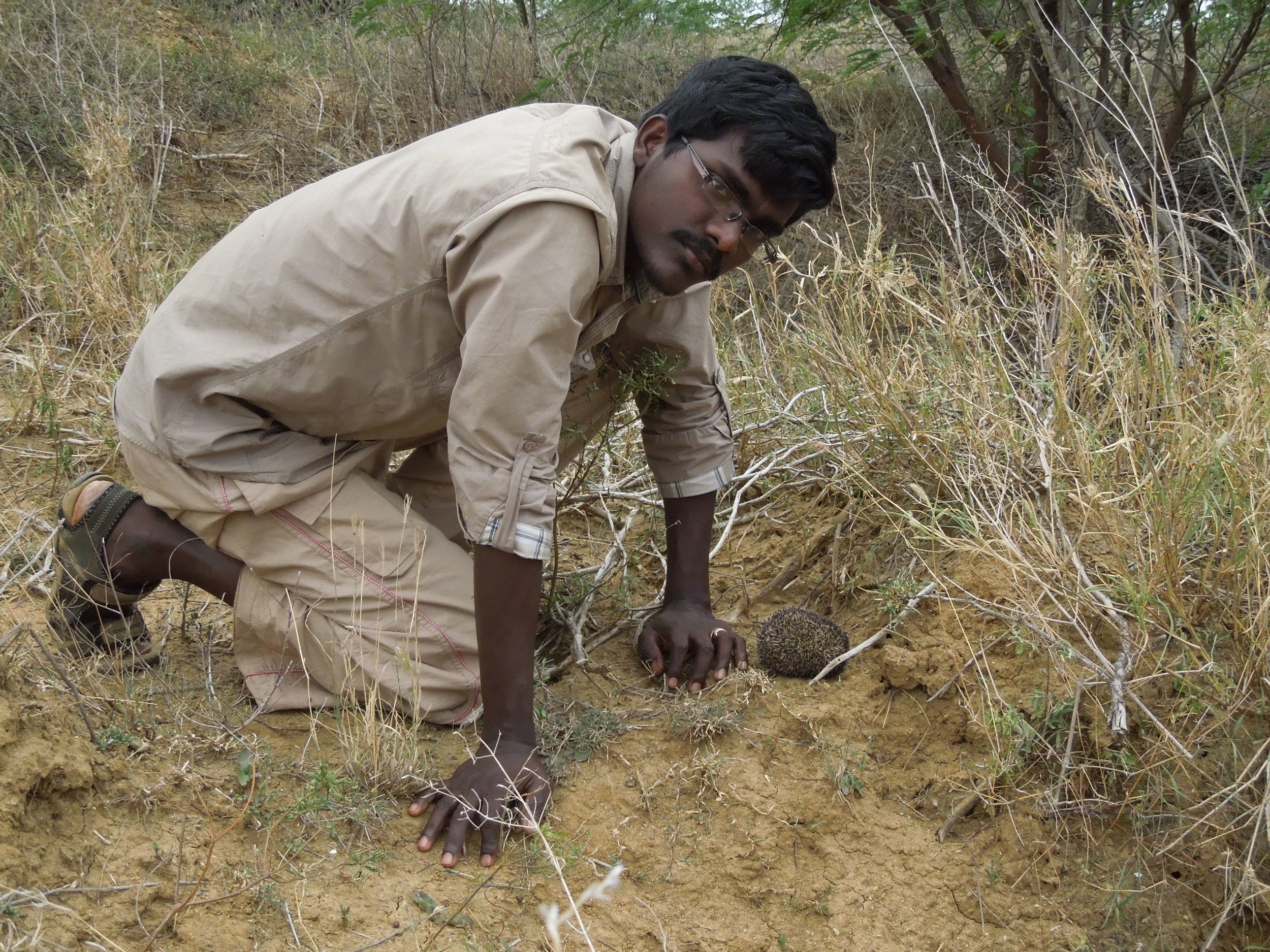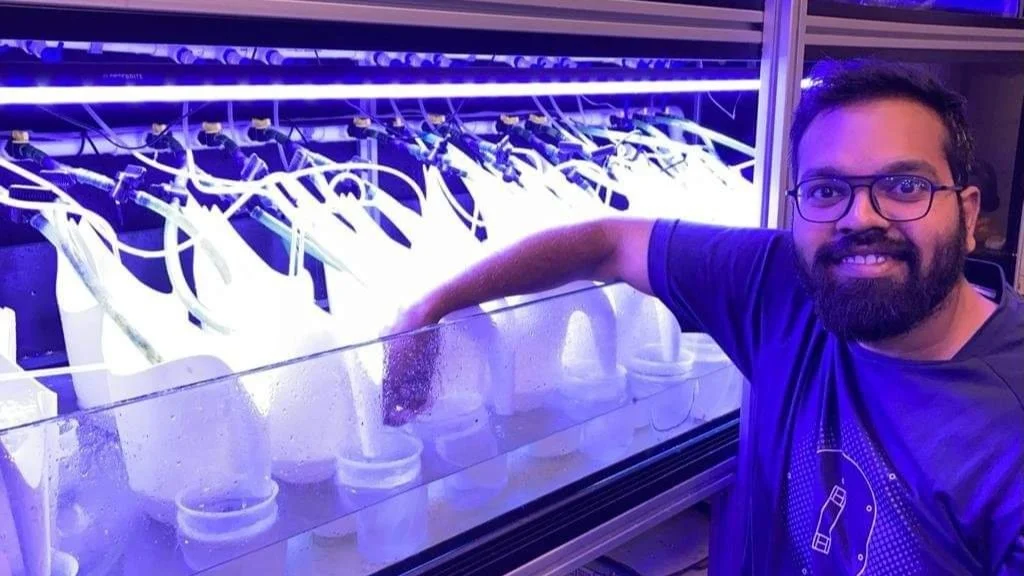Take Off Grantee 2020: Priya Thuvassery
Priya Thuvassery is a 2020 Take Off Grantee. She is an independent documentary filmmaker and television producer based in New Delhi. Her body of work focuses on experiences of the body, the environment, the community, mapped from a gender and feminist perspective.
She is the filmmaker of the award winning film, Coral Woman. The film is about a painter and homemaker from Tamil Nadu who learnt how to dive and swim in her 50s in order to raise awareness about the fast-depleting coral reefs of Tamil Nadu.
In the blog below, Priya along with the Impact Producer of the film, Anupama Mandloi, share their experiences and hopes for the future of Coral Woman.
Priya Thuvassery, Filmmaker
“Naan kanda kaatchi
Nee kaanavillai”
In 2018, during our first trip to Rameshwaram, Tamil Nadu together, Uma Mani, the primary protagonist of Coral Woman, shared the line from this famous song from Padithal Mattum Podhuma , a 1962 Tamil film. She loosely translated it for me “You should see the world I have seen. And I wish you should also see the underwater world I have seen”. I was intrigued by Uma’s passion. In her 50’s she overcame several hurdles as she learnt how to swim and became a PADI-certified divers to see her muse, coral reefs. She inspired me. Before I met her, I was a film maker who did not know how to swim nor had any interest in the creating a film about underwater life. Our friendship took me to the world of coral reefs in the Gulf of Mannar India. I was introduced to their beauty and the threats they are facing.
Uma Mani
My meeting with Uma was accidental. I always say, it was the story that picked me. In 2017, I was working as a television producer for a news channel when I received a call from Uma requesting my channel to make a documentary on coral reefs. There was something about Uma that struck me, she stood out from the several calls we receive. She called back the same day after watching my previous documentaries online. This time she asked, “ You are a documentary filmmaker, can you make a film on coral reefs in India?”. Upon learning Uma’s story, my response to her was, “I don’t know if I will make a film on coral reefs, but I want to make a film on you”.
It took me two years to gather the confidence to take the plunge. It was unknown territory in terms of geography and filming technique. Slowly and steadily I learnt not only about underwater cinematography but also about the coral reefs in Gulf of Mannar. It is a precious coral belt that very little is known about. I like most people assumed that coral reefs were just found in Andamans and Lakshadweep Islands
Situated in the southeast of India, the coral reef extends from Rameswaram Island in the north to Kanyakumari in the south. There is a chain of 21 uninhabited coral islands in the Gulf of Mannar stretching from Mandapam to Tuticorin. The total number of species recorded in the Gulf of Mannar accounts to 4,223. The Government of Tamil Nadu in 1986 declared the 21 Islands and the surrounding shallow coastal waters covering an area of 560 sq km as the Gulf of Mannar Marine National Park. The Government of India in 1989 declared the entire Gulf of Mannar area covering 10,500 sq km as the Gulf of Mannar Marine Biosphere Reserve. There are over 131 identified coral species in the Gulf of Mannar. The most interesting fact I learnt is that they are the rain forests of the ocean. They occupy less than one percent of the ocean floor, but are home to more than 25% of all marine life. An animal, which I assumed to be a colorful rock, soon became the most intriguing subject to me. I understood why Uma was so fascinated about these reefs and paints them on her canvas. The first time I saw them while snorkeling I forgot where I was and opened my mouth to say Wow! I drank a lot of salt water that day.
The more I learned, the harder the reality hit. Coral cover in most of the islands of Gulf of Mannar has decreased significantly during the period between 2005 (37%) and 2018 (24%). Climate change driven coral bleaching was the major factor affecting coral ecosystems of Gulf of Mannar during the past decade. The mass coral bleaching events and consequent mortalities in 2010 and 2016 have placed the coral reef ecosystems of Gulf of Mannar under enormous pressure and diminished their resources. Going through the footage of dead corals was gut-wrenching. We watched the anthropogenic effects which result in the death of the coral. Thermal plants dumping fly ashes and hotels diverting sewage directly in the sea, pilgrims leaving clothes in the water following a belief that with their old clothes their sins will also be washed away. All these activities not only smother corals, but also cause ocean temperatures to increase. We met women who lamented cancer patients in every second house due to water pollution, we met protestors who were raising slogans against a chemical factory for past 90 days and authorities ignoring their voice.
We choose to first screen the film in Tamil Nadu. It was incredible how many people were touched by it and how many didn’t know about their state’s rich coastal belt. It made the filmmaker in me realise that this can not only be a film.
Coral Woman ends with a quote by one of my favourite oceanographers, Sylvia Earle - “Knowing is the key to caring, and with caring there is hope that people will be motivated to take positive actions. They might not care even if they know, but they can't care if they are unaware.”
Bridging this gap through art became the journey forward for Coral Woman.
Anupama Mandloi, Impact Producer
When I met Priya in 2019, I knew she had something special. A year later, we presented Good Pitch India, together gathering support and sponsorship for Coral Woman to grow beyond the film. The experience was exhilarating as several organisations and individuals offered to help with the goals we had shared. We were even more encouraged when some of the organisations who committed to enabling our Impact Project, stayed with us through the pandemic. The faith and belief of these collaborators gave the project its current shape.
Uma painting
Gen1 and Rivev came together and built the website for Coral Woman which has since then hosted several virtual tours with experts on the coastal issues across India; sold Uma’s paintings and also led to the formation of a community that believes passionately in marine conservation.
In 2021, Harper Collins published an illustrated children’s book based on Coral Woman. It was a moment of immense pride when the book was released at an event held at the Chhatrapati Shivaji Maharaj Vastu Sangrahalaya (CSMVS) in Mumbai.
The experience was so rewarding and exciting that we decided to form a partnership under the banner of T&M Productions. It was also time to focus on our next goal and Priya’s dream project, the art residency. The residency is designed to bring together artists and coastal community representatives to design an art installation. The design would be built for an underwater as well as ground sculpture. The idea behind these two installations is to create a comparison between the positive and healing effects of nature vs the anthropogenic effects of man on the environment. The way to achieve this is to have coral rehabilitation on the underwater installation and build an interactive sculpture with plastic, waste and scrap material above ground. Over time, the two installations will be monitored and recorded to see their evolution and exhibit the stark difference for people to see.
The dream of building a conversation around protecting the environment was a potent one. As with the other projects, finding partners to collaborate with and enable us became the next step. We were fortunate when Inlaks awarded Priya the Take Off Grant and the virtual residency was born in November 2021. A design took shape with the combined vision of the artists Midhun Mohan, Ramkumar and Pooja and inputs from experts like Bayanna Sharad and Nina (fellow researchers from Lakshadweep); Diraviyam from SDMRI; Venkatesh Charloo from Coastal Impact; Sarita Fernandes, a marine and coastal policy researcher; Arun Kumar HG, an artist and sustainability expert; Stephanie Kilglast, an artist whose works are centered around corals. The two-week creative process has been rewarding and enriching. We now wait eagerly to meet and work with the artists and Coastal Impact in Goa to give the design a physical reality.
The Coral Woman Impact Project is now focused on raising funds and organizing the logistics for a successful execution of the design in Goa and its installation under water and on ground. The film that created so much buzz globally across festivals and won innumerable awards has already morphed into a children’s book and well on its way to inspiring a piece of art that will herald the desire among many more people to protect the Indian reefs and coasts.











